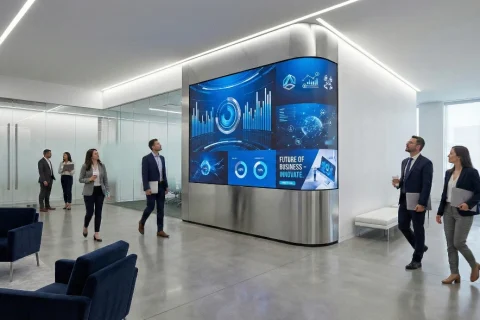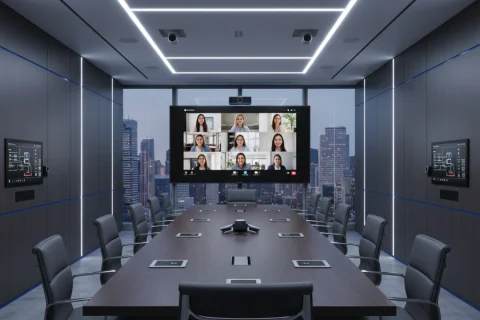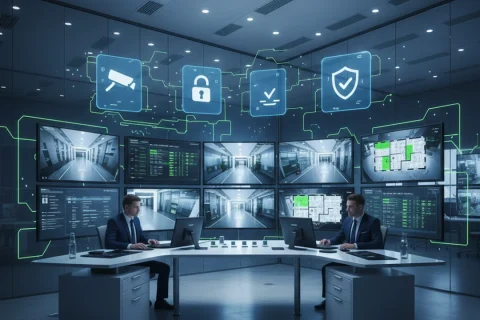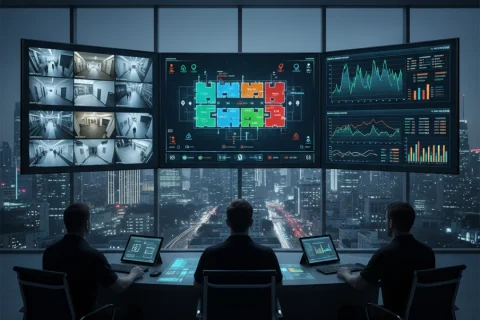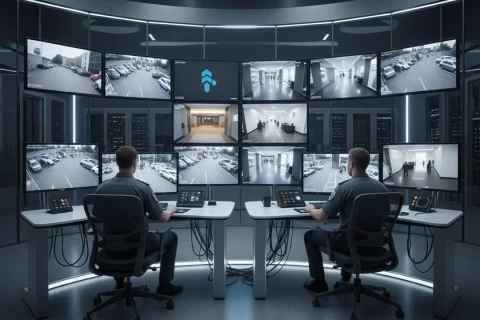In today’s rapidly evolving technological landscape, choosing the best ELV (Extra Low Voltage) system for your project is crucial. This blog will guide you through the key factors you should consider when making this significant decision. Whether you’re working on a commercial space or a residential project, understanding the importance of ELV systems and their components is vital. You will explore specific elements such as system selection, technology integration, and project management implications to ensure a successful installation and operation of your chosen system.
As we delve into this topic, you’ll gain insights into various components of ELV systems, how to evaluate your unique needs, and the importance of seamless integration with existing technology. You’ll also learn about project management strategies that can streamline installation and maintenance, making this exploration not only informative but also practical for your projects.
Understanding ELV Systems: Definitions and Components
ELV systems encompass a variety of low-voltage technologies that enhance safety, communication, and efficiency within a building. The term ‘ELV’ refers to systems that operate below 50V AC or 120V DC, making them relatively safe compared to traditional electrical systems. Key components of ELV systems include CCTV systems for surveillance, fire alarm systems for safety, communication networks for connectivity, and AV systems for audio-visual needs.
CCTV systems are instrumental in modern security protocols, offering real-time monitoring and recording capabilities. Fire alarm systems are equally essential, providing alerts in the case of emergencies. Additionally, robust communication networks ensure reliable interaction between various building components and occupants, while AV systems enhance presentations, meetings, and entertainment needs. By understanding these components, stakeholders can better assess their specific needs and make informed choices.
Importance of System Selection: Evaluating Your Unique Needs
Choosing the right ELV system is not a one-size-fits-all scenario. Evaluating your project’s unique needs is paramount in the initial selection process. Begin by assessing your specific requirements, including budget constraints, the scope of the project, and performance expectations. Taking a tailored approach allows you to identify systems that align closely with your goals.
Consider factors such as scalability, energy efficiency, and future expansion possibilities. A system that can adapt to changing needs over time can save you considerable costs and frustration down the line. Furthermore, understanding the long-term implications of your choices, including maintenance and operational costs, is crucial for a successful investment.
Technology Integration: Ensuring Compatibility and Future-proofing
One of the pivotal aspects when selecting an ELV system is ensuring seamless technology integration. This means that the system you choose should be capable of interfacing with any existing technology you have in place. By doing so, you minimize disruptions during installation and operation, making your space more efficient.
Moreover, future-proofing your installation is a necessity in this fast-evolving technological era. Opt for systems that allow for upgrades and additional features without requiring complete overhauls. Challenges may arise during integration, but being proactive in your planning can mitigate potential issues and enhance your overall experience in the long run.
Project Management Implications: Streamlining Installation and Maintenance
Project management plays a significant role throughout the installation process of your ELV system. Preparing for installation involves careful planning, including hiring competent installers, setting realistic timelines, and defining clear project scopes. Effective communication with all relevant stakeholders, including contractors and system providers, is essential during every stage of the project.
Maintenance should also be a key consideration right from the outset. Developing a maintenance schedule and ensuring proper training for your staff can prolong the system’s lifespan and performance. Implementing best practices during installation can mitigate future issues and ensure that the technology remains functional and relevant for years to come.
Conclusion: Making an Informed Decision
In conclusion, selecting the best ELV system requires careful consideration of multiple factors, including your unique needs, the technology landscape, and project management strategies. A well-selected ELV system can enhance the functionality and efficiency of your project, whether commercial or residential.
Remember to explore all options and seek professional guidance when necessary to ensure a successful installation. As you reflect on the key considerations discussed in this blog, remember that making an informed decision is crucial for a project that meets both current and future demands.
We invite you to share your thoughts and experiences with ELV systems in the comments below. Whether you have questions, insights, or anecdotes to share, your participation fosters community learning. Let’s cultivate a spirit of collaboration and discussion that can benefit everyone involved in the complex world of low-voltage systems.
Frequently Asked Questions
What is an ELV system?
An ELV (Extra Low Voltage) system refers to electronic systems that operate at low voltage levels, typically below 50V AC or 120V DC, enhancing safety, communication, and efficiency within buildings.
What are the key components of ELV systems?
Key components include CCTV systems for surveillance, fire alarm systems for safety, communication networks for connectivity, and AV systems for audio-visual needs.
Why is system selection important for an ELV system?
System selection is crucial because each project has unique requirements. Evaluating your needs helps align the right system with your goals, including budget, scope, and performance expectations.
How can I evaluate my unique needs for an ELV system?
Begin by assessing factors such as your budget, the scope of the project, energy efficiency, scalability, and future expansion possibilities to make a tailored choice.
What does technology integration mean in the context of ELV systems?
Technology integration means ensuring that the selected ELV system can seamlessly interface with existing technologies, minimizing disruptions during installation and improving overall functionality.
How can I future-proof my ELV system installation?
Choose systems that allow for upgrades and additional features without a complete overhaul to ensure your installation can evolve with technological advancements.
What role does project management play in installing an ELV system?
Project management is crucial as it involves careful planning, including timelines, hiring competent installers, and effective communication with stakeholders to ensure a smooth installation process.
What maintenance considerations should I make for an ELV system?
Develop a maintenance schedule and ensure proper training for your staff to prolong the system’s lifespan and improve performance over time.
How does an ELV system enhance the functionality of a project?
A well-selected ELV system can significantly improve safety, communication, and efficiency, making the space more functional for both commercial and residential projects.
What should I do if I need professional guidance when selecting an ELV system?
It’s advisable to consult with industry experts or professionals who can provide insights and help identify options best suited for your specific project needs.

